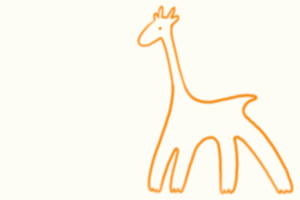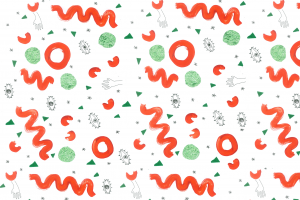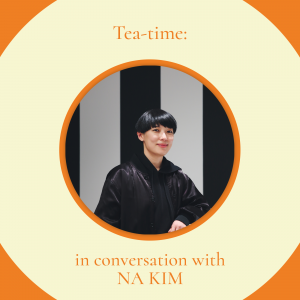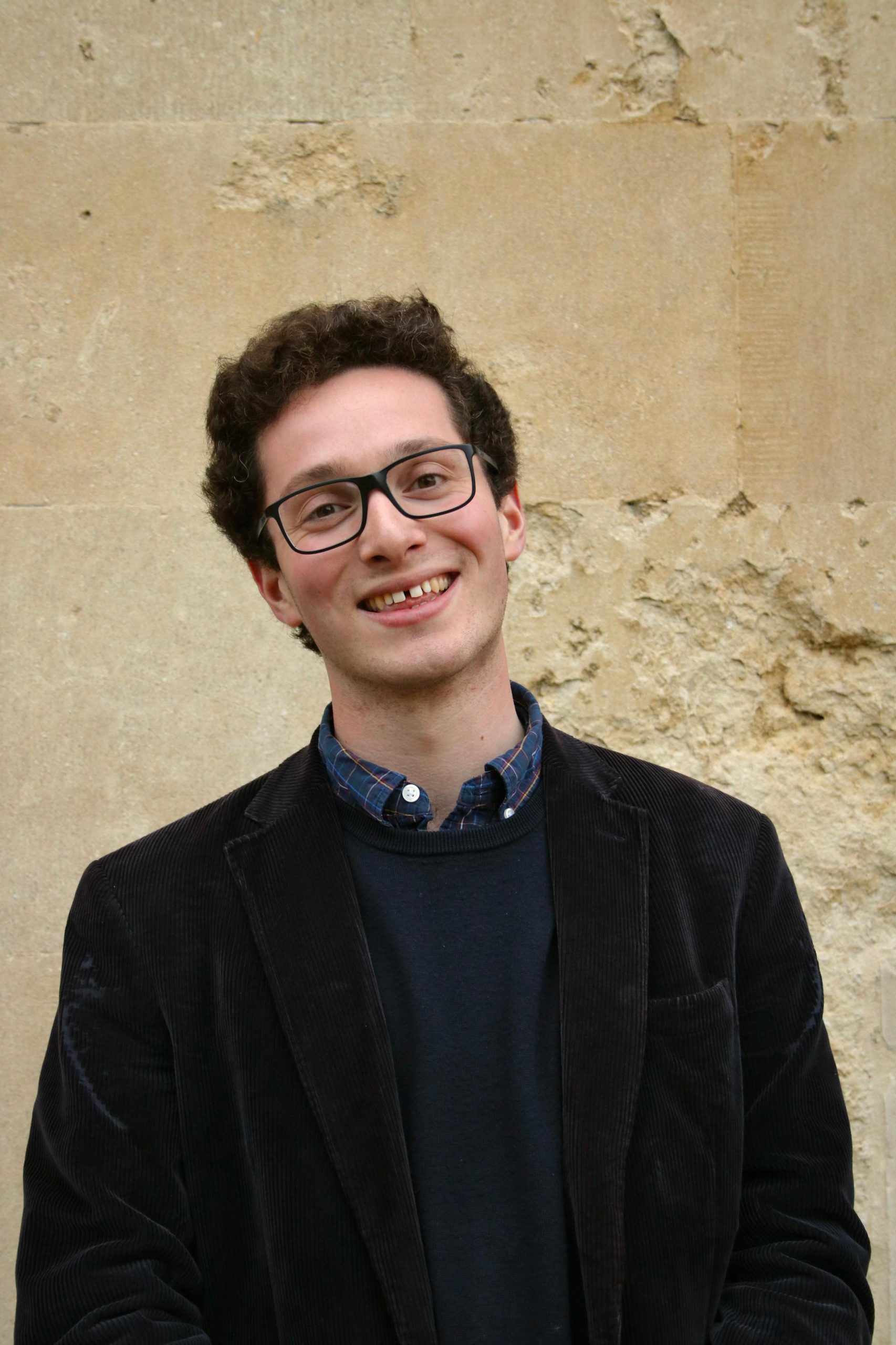
Artist of the Week: Hugo Max
by Coco Cottam | May 15, 2023
Your room is full of giraffes, on birthday cards, figurines, blankets. They pop up in a lot of your recent work. Why giraffes?
Where to begin with giraffes? There’s an old Jewish joke that giraffe meat would be kosher, but they don’t know where to cut the neck. Which, purely from a painter’s point of view, I find wonderful, because it presents a limitation within which to work, and as a way of germinating ideas. When you’re in the studio and you’re trying to work things out, you have these things that you come back to. So, there is this joke of the kosher giraffe, which I find ridiculous and dark. The blending of cinematic horror and unsettling humour is also very human because the giraffe is alien to us – I find that in itself very intriguing. The giraffe, for me, has come to represent the Jewish immigrant. It allows me to consider my own family history: my great grandfather who fled Vienna 1938 with his wife Clara, to then be interned on the Isle of Man as an ‘enemy alien’, or prisoner of war.
You addressed this in the short film you made, Facades of Manx Hotels. The videos shot were of the hotels used to intern Jewish people on the Isle of Man.
That was a very literal blending of text with imagery, which I’ve since thought about revising. But I’ll definitely come back to that footage. Last year, I spent a couple of days in Vienna, and then went to the Isle of Man immediately after, so I basically mapped out my great grandfather’s journey. I went to the university archive in Vienna and read his 1927 dissertation on the history of Jews in Bukovina, a place which was obliterated by the Nazis and the Soviets. None of my family had thought about reaching out and engaging with it so it was bizarre to find his handwritten documents in the archive.
The giraffe has simultaneously become a stand-in for the ‘enemy alien’ and the interned Jew. Jewish artists like Leon Kossoff and Frank Novak are being brought up on their work. Their approaches to painting and their thick paint feel deeply rooted in my guts. They didn’t talk about their Jewish heritage, but it’s definitely concealed under the paints, for me at least.
And tell us about the film you’re making with the giraffes at the moment!
I’ve come up with this funny concept of a family of giraffes having dinner. It started with an exhibition I did: Shochet (meaning ‘kosher butcher’) last year. I brought my family into the exhibition of closely-hung paintings, so it became a kind of living room, and we did a Jewish Friday Night Dinner. And I wanted to recapitulate that idea, on film as opposed to performance.
So, the giraffes are actually eating, and they’re not just props at the table?
Well, they basically are props at the table, because the other issue with the giraffes is that they’re decapitated, so the eating process is too.
I’m still working the film out, and I think it will be integrated with photos I took on my research travels. It’s about getting this fine line between quite ambiguous humour, where it’s like Paddington Bear, with people in giraffe suits, and then also making it quite dark. What’s so bizarre about the internment on the Isle of Man is that for some of them, it was quite a lovely time. The war was going on the mainland and yet they were living in these holiday hotels with barbed wire outside. For some of them, it was a kind of weird holiday, while others had traumatic memories. So, there’s this darkness and this hope which exists in some measure.
All the hotels are still there. That’s what fascinates me – they’re like carcasses on the beachfront, but they are moving. They’ve been renovated inside but the structures are still there. I found the exact hotel where my great-grandfather was interned and it was a strange experience.
Without necessarily understanding all the context, I still felt that tension in the film. Your work often revolves around these complicated histories. Do you feel like people need to know about them to understand your work?
I don’t think people necessarily need to know. The reason why I’m so interested is that it’s a bit of history which hasn’t been remembered. People don’t really talk about the internment of ‘enemy aliens’ during the war. To quote Churchill: “collar the lot”. It’s important to me that there is recognition of Jewish immigrant painting post-1940. I believe everything is a story. I used to think I just wanted to make feature films, but I’ve now realised that different stories required different mediums. When it comes to how they’re told, you just work it while you’re making them.
How much do you merge and interconnect mediums?
Especially among artists of our age, it feels unpopular to be a multidisciplinary artist. But I find that one thing spills into another and informs the other. I don’t think I could be a filmmaker or a painter if I hadn’t had the experiences I’ve had as a classically trained musician. I’m endlessly grateful for the people I’ve met through that process. And particularly playing the string quartet, with its nonverbal communication and focus on listening. That’s definitely impacted how I approach directing and working on film sets. It all stems from the string quartet.
Bizarrely, most people on large film sets have had some kind of musical experience. When I first started making films with my friends, I was working with musical performers rather than trained actors. Though I now work with trained actors and I’m learning to allow space for performance to grow, there’s a lovely raw energy about working with musical performance. It can be outrageous, human, ugly and vulnerable.
It’s different for the scripted films I make. Dissonance, for instance, went through a seven-year gestation period with many drafts of the script. I first had the idea in 2015 and I’d been working on it since then. That was very much like a musical conversation because the film was about music.
The other thing that’s very important in my process is just turning the camera on. It’s almost closer to documentary filmmaking. You have an idea of a story you want to tell, you move onto film, and that completely reframes the original concept. You work footage back into that concept. And the same is true of the painting process. There is this thread of documentary-making that ties the two together.
And how has your art been shaped by Oxford? Especially in relation to the Ruskin as an institutional setting for art?
The Oxford question fascinates me. The beautiful thing about Oxford is that it really is what you make of it. It’s a fertile space in which you can communicate with both students and local people through making. It’s been lovely to have a relationship with this city over the last three years. I think that’s visible through the multidisciplinary events I’ve done at the Holywell Music Room. It’s a wonderful space and is supposed to be the oldest purpose-built music hall in the country – if not in Europe. But that’s all a myth.
I’m very pleased that I’ve come to the Ruskin. By the end of it, you learn to have faith in your own intention. It’s all about learning intention.
As a city, I can find myself slightly suppressed. There’s the sandstone aesthetic and then the desire to rebel against that. The Ruskin is in quite a weird place, as it’s in conversation with Oxford and its history, but also trying to escape from it as a contemporary art institution. The atmosphere itself hasn’t influenced the work, but being here has naturally fed into the work.
How do you get your ideas? Do you have a process for it?
Dangerously, it’s all obsession. You notice particular things that you’ve become obsessed with, whether it’s an image, a harmony, a chord progression, or an idea, story, or person. It influences your entire perception. Naturally, the stories start to exist, and you have to join the dots. I’m very lucky to work with all these amazing and inspiring people. Through conversation, these ideas develop at their own pace. There’s a material engagement that can take lots of time or none at all; a painting can take three years while a film is shot in a day, or vice versa. So, I get my ideas just by experiencing as much as possible.
There’s that writing advice: to be a tourist in your own space.
Yes, I guess that heightens your sense of observation. It’s difficult because you want to feel comfortable in yourself and your ideas.
Maybe it works best as a writing experiment. Does fiction inspire you? Do you find literature works its way into your paintings or your films?
I try to read quite widely. Recently I’ve been rereading JG Ballard’s Concrete Island, which I’m trying to adapt into an operetta. It’s an amazing chamber piece. It does all that Ballard does in his oeuvre but in a shorter space of time. It’s an ugly story, but very human. It would make a great drama, especially in opera which is a very heightened environment. I keep returning to the book. I used to have a very dark sense of humour, but now with the Isle of Man research my temperament has changed.
My attitude to stories has changed a lot. What really intrigued me about film when I was younger was trailers for horror films. You’d see how the events or narrative would physically reveal themselves in a character through wounds. Because I was too young to see them, I found gothic horror very enticing. It’s story in its rawest and most blatant terms. And that’s not where I am anymore. These giraffes are more tragi-comic, I hope. The models and paintings that have worked best are those where it’s less clear they’ve been decapitated. There’s always more to do, which is exciting.
What does it all come down to for you?
People. Engaging with people. That’s definitely why chamber music is the most important thing to me. It feels like the most intimate and honest, despite using material which is 300 or so years old. Finding space to communicate within that has been one of the most fertile experiences I’ve ever had.
Interview by Coco Cottam.
Photography by Coco Cottam.
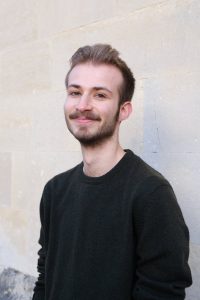
![Artist of the Week: Izzy Kori 342866687_167133812658305_2751687920373499534_n[78]-min](https://isismagazine.org.uk/wp-content/uploads/2023/05/342866687_167133812658305_2751687920373499534_n78-min-200x300.jpg)
